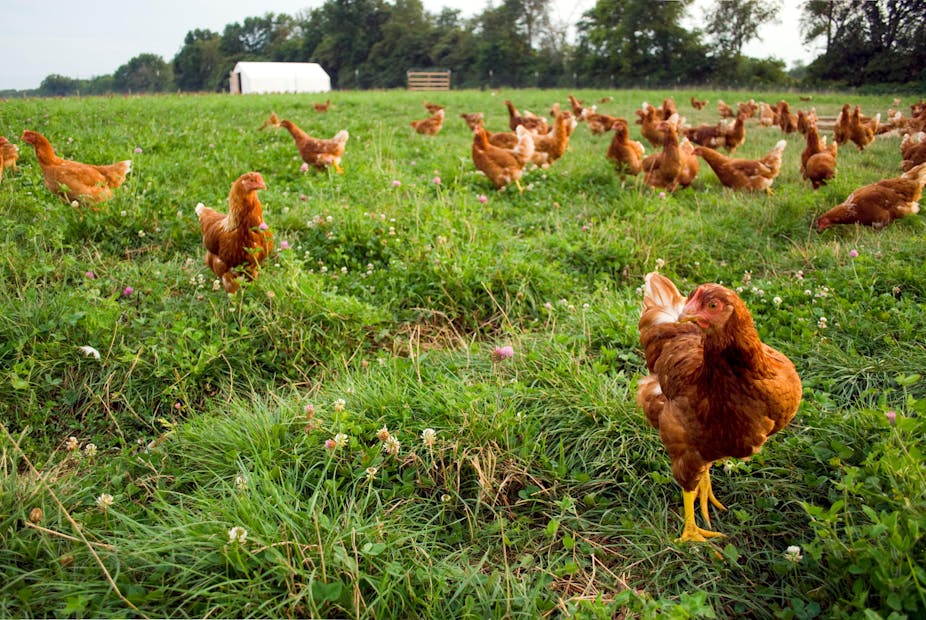Animal welfare is a term that frequently pops up in headlines, most recently in the debate over how animals are killed for kosher and halal food. But the concept of animal welfare is often misunderstood, as recently illustrated by the public response to the euthanasia of Marius the giraffe.
A simple and widely used definition of animal welfare is that it is the quality of life an animal experiences. The problem is what we mean by quality of life. Even within the same social group, individuals can have very different ideas about this. I, for example, most highly value being able to travel and experience new cultures with my family. Whereas, for others quality of life comes from the security of owning a home and having possessions.
What this tell us is that animal welfare and indeed human welfare are concepts that need to be measured on the individual level: there is no one size that fits all.
Individual experiences
To illustrate how difficult it can be to measure animal welfare on an individual level, let us look at an example. I am terrified of rollercoasters. My sister loves them. Imagine my sister and I are sat side-by-side on a scary rollercoaster. If during the ride, someone were to measure our physiological responses, blood pressure and stress hormone release, they would be identical.
Our blood pressures would soar and our adrenal glands would start to release the flight or fight response hormones. At the end of the ride, my sister would be there with her arms in the air wishing to go again, whereas I would be kissing the ground in happiness that I had survived.
This highlights how animal welfare is about how an individual feels about a situation. Thus, simple physiological parameters on their own, such as stress hormones, do not illuminate much about animal welfare. We need also to measure what an animal feels about a situation – this is a significant challenge to science.
The quest for long life
There are many misconceptions about animal welfare and some of the most common ones are associated with death and longevity. This should not surprise us since some of the greatest human achievements in the last century have involved increasing human lifespan. The innate fear of death in humans often drives the public to equate well-being with longevity; for example, annually members of the international media celebrate the birthday of the world’s oldest person.
Humans often believe that animals in captivity must live long lives to experience a good level of welfare. But, if I were to offer people the choice of living to 120 years old as a very poor person or 60 years old as a very rich person, most would choose the second option because, in general, wealth equates with quality of life (though not necessarily happiness).
It may shock some people to know that the life of many farm animals is incredibly short, your Sunday roast chicken was only forty something days old and the bacon in your morning sandwich about nine months old when slaughtered.
From an animal welfare perspective, this is not a problem if they had a good quality of life before they died. Why do animal welfare scientists think this way? Because for them, death is not a welfare issue, providing it is humane.
A humane death is one where the animal immediately loses consciousness through either instantaneous death or effective stunning. There is little evidence that species other than humans or, perhaps, apes have a concept of death. I remember watching a video of free-range pigs – highly intelligent social animals – being slaughtered humanely (electrically stunned) in a field and being impressed by how they did not respond to the death of a littermate killed by their side.
The Scottish poet, Robert Burns, captured the problem of the human condition when compared to most animals in his poem “To a mouse”, where he relates the words of a ploughman apologising to a mouse whose home he destroyed:
Still thou are blest, compared wi’ me!
The present only toucheth thee:
But Och! I backward cast my e’e
On prospects drear!
An’ forward, tho’ I cannot see,
I guess an’ fear!
In this last verse, Burns identifies the key point that we should not project human thoughts or feelings on to animals, but accept them as they are.
Not having a concept of death is not necessarily a bad thing for animals, the ability to think about the future leads us humans to think about our own mortality and for many people this a considerable source of angst. Humans are of course able to hold and rationalise apparently incompatible views such as accepting the infanticide on their dinner plate while protesting about the euthanasia of a giraffe.
Why should we be bothered about animal welfare? From an ethical standpoint, society has already determined that we are responsible for animals being in captivity and so we are responsible for their well-being. From an economic perspective, good animal welfare makes sense – it enables us to produce better quality meat. Considering more than 50 billion farm animals are slaughtered annually for food production, good animal welfare makes good business sense, which perhaps goes beyond fulfilling our moral obligations.

